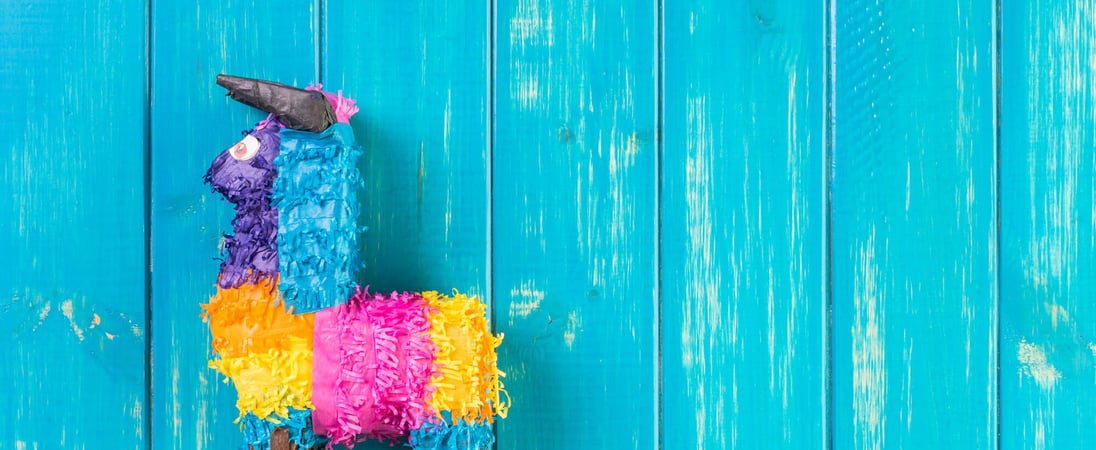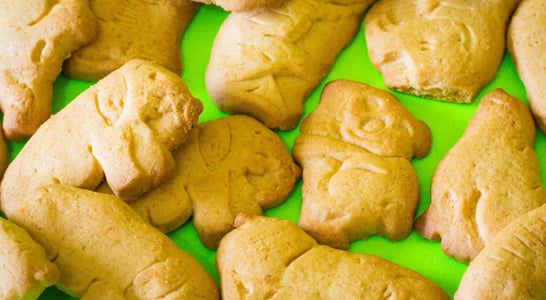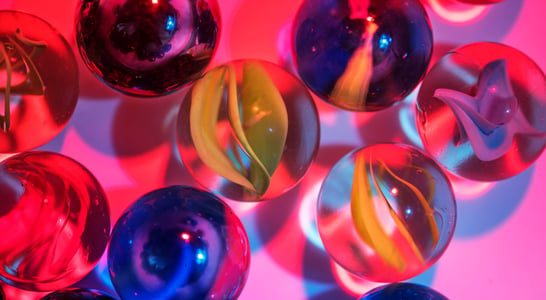
National Piñata Day
Get a bat, get a piñata, and whack away! It doesn’t have to be a birthday or other occasion to treat yourself to a cathartic piñata—or try making your own.
These colorful and creative candy containers are popular in celebrations and birthdays all over the world.
Their origins may be much further back, but great fun and great memories have been created over nothing more than being blindfolded and trying to hit a papier-mâché donkey and make it spill its guts full of candy all over the ground.
The hilarity of missing, the hilarity of hitting someone or thing other than piñata, and the mad scramble for all the wonderful contents are all part of what makes National Piñata Day great! Have you busted open an innocent papier-mâché creature lately?
How to Celebrate National Piñata Day
Alright, at this point we can only figure you’re pulling our leg. Pull the other one, it’s got bells on!
Enjoy a Pinata
Celebrating piñata day is as simple as finding a local supplier of piñatas, filling it full of fun prizes, hanging it up, and beating the ever living tar out of it!
Make a Pinata
On the other hand, if you’re the crafty sort, you might actually consider making piñatas of your own. It’s not terribly difficult, and can be a lot of fun for the whole family.
The supplies are even cheap, it just requires some paste, a frame, and lots of shredded newspaper. Look up videos online and go for it!
History of National Piñata Day
There’s no way to discuss Piñata Day, without discussing the history of the piñata. While the tradition of the piñata is typically thought of as originating in Mexico, the real history of this most entertaining toy and candy delivery system is actually must older.
Sometime in the 14th century (that’s before the discovery of the New World by Europeans, in case you’re history deficient) an idea became popular. That idea was filling a container with prizes and smacking the heck out of it until it showered down its delicious and/or fun entrails. Sorry, was that too graphic?
The name piñata is actually a variation of the Italian pignatta, and it was brought to Mesoamerica by the Spanish conquistadors. When they arrived in Mexico, they actually underwent an interesting transformation, becoming deeply entrenched with religious significance.
The traditional piñata (rather than those used for parties and such) is actually a sphere with seven points issuing from it, one for each of the seven deadly sins.
The attack of the piñata is actually meant to demonstrate the battle of the soul against temptation and evil, with the contents being the rewards of the ever after. Surprisingly deep for a papier-mâché ball of treats and prized, isn’t it?
National Piñata Day FAQs
How did piñatas become part of Italian Renaissance celebrations?
During the Renaissance, Italians used “pignattas” (clay pots) in festive games.
These pots were decorated and filled with trinkets or candies. Breaking them was a highlight of Carnival, a precursor to modern piñata traditions.
What is the strangest material ever used for a piñata?
In the early 1900s, people in rural areas without access to traditional materials used woven reeds and even gourds to create piñatas. These makeshift designs were filled with dried fruit or seeds instead of candy.
Are there eco-friendly piñatas today?
Yes, some communities now craft piñatas from biodegradable paper or recycled materials.
These designs ensure the fun tradition continues while reducing environmental impact, a modern twist on an old custom.
What unusual items have been found in piñatas?
Some piñatas include quirky items like small toys, fortune slips, or mini piñatas inside a larger one. In Mexico, piñatas for adults sometimes hide tequila miniatures or funny notes.
Why are donkey-shaped piñatas so popular?
The donkey is a nod to the animal’s importance in Mexican culture. It also symbolizes humility and strength, making it a beloved shape for celebrations.
How did piñatas inspire a video game trend?
The game “Viva Piñata” was inspired by the colorful designs and idea of surprises inside. Players build piñata-like creatures, showing how the tradition inspires modern creativity.
What’s the connection between piñatas and Christmas in Latin America?
During Las Posadas, a Christmas celebration in Mexico, traditional star-shaped piñatas symbolize guiding the wise men to Jesus. These piñatas are filled with fruits and candies for children.
Why are piñatas popular at weddings in some countries?
In some Latin American weddings, breaking a piñata together symbolizes the couple sharing joy and blessings. Special heart-shaped designs are often used for these events.
Are piñatas used outside parties or festivals?
Yes, some artists and activists use piñatas in performances or protests. For example, piñatas shaped like political figures are used as a form of satire during demonstrations.
Do piñata colors have special meanings?
Traditional piñatas often use bright colors to represent hope and joy. Each color symbolizes an aspect of life, such as red for love or green for growth.
See what else is happening…
There’s always more going on every month at Days Of The Year. Here are our favorites this month!
Also on ...
View all holidaysNational Animal Crackers Day
A classic favorite snack for children of generations, simply take some time to enjoy some sweet, fun animal crackers on National Animal Crackers Day.
International Amateur Radio Day
The “International” in “International Amateur Radio Day” honors how amateur radio-ers pioneered fast, immediate global connection in the 20th century.
National Exercise Day
Engaging in physical activity invigorates the body, fostering vitality and well-being with each rhythmic movement and breath.




